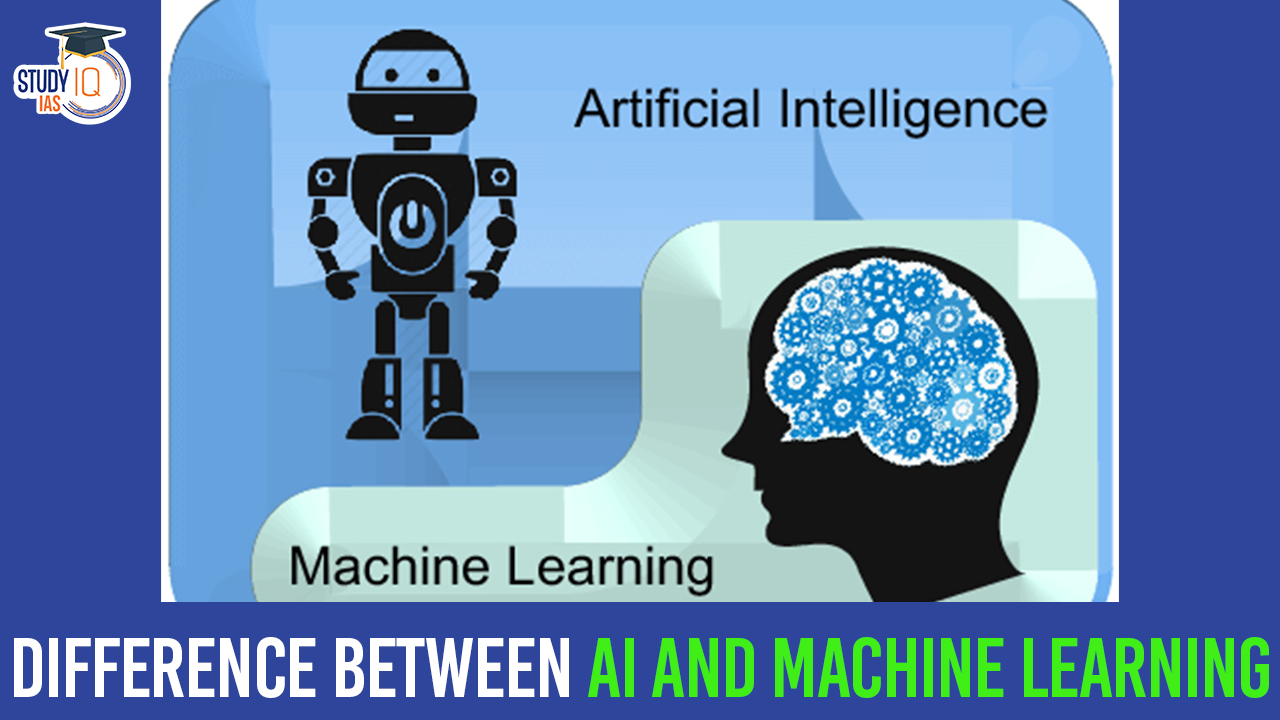Table of Contents
In the ever-evolving landscape of technology, Artificial Intelligence (AI) and Machine Learning (ML) stand as two fundamental pillars, driving innovation and transformation across various industries. While often used interchangeably, it’s crucial to recognize the nuanced differences between these concepts to fully grasp their implications and potential.
Artificial Intelligence (AI)
Artificial Intelligence, as the name suggests, encompasses the creation of intelligent systems capable of performing tasks that typically necessitate human intelligence. Coined by John McCarthy in 1956, AI aims to imbue machines with abilities like visual perception, speech recognition, decision-making, and natural language processing. It is not merely a system but a broader field within computer science that explores the development of algorithms and systems capable of reasoning, learning, and decision-making based on input data.
AI spans a spectrum of capabilities, ranging from narrow to super intelligence. Narrow AI, such as Siri or chatbots, specializes in specific tasks, while Artificial General Intelligence (AGI) aims to mimic human-level intelligence across various domains. The pinnacle of AI, Artificial Super Intelligence (ASI), surpasses human intelligence and capabilities.
Machine Learning (ML)
Machine Learning, on the other hand, is a subset of AI focused on teaching machines to learn from data without explicit programming. Coined by IBM computer scientist Arthur Samuel in 1952, ML algorithms identify patterns and trends within data, enabling them to make predictions and decisions autonomously. It encompasses techniques like supervised learning, unsupervised learning, and reinforcement learning.
Unlike traditional programming where rules are explicitly defined, ML systems derive insights from data, allowing them to adapt and improve over time. Common applications of ML include personalized recommendations, fraud detection, and predictive analytics.
Difference Between AI and Machine Learning
| Aspect | Artificial Intelligence (AI) | Machine Learning (ML) |
| Definition | AI focuses on creating intelligent systems capable of performing tasks requiring human-like intelligence, such as decision-making, natural language processing, etc. | ML is a subset of AI that involves teaching machines to learn from data without being explicitly programmed. |
| Components | AI encompasses various components including Machine Learning (ML), Deep Learning (DL), and other techniques like rule-based systems and expert systems. | ML is a specific technique within AI, focusing on algorithms that enable machines to learn from data. |
| Goal | The goal of AI is to create systems that can exhibit human-like intelligence across various tasks and domains. | ML aims to develop algorithms that improve their performance on specific tasks through learning from data. |
| Approach | AI can employ a variety of approaches, including rule-based systems, expert systems, and machine learning algorithms. | ML primarily relies on algorithms such as neural networks, decision trees, and clustering to learn from data. |
| Data Dependency | AI systems can work with both structured and unstructured data, including text, images, video, and audio. | ML algorithms require structured or semi-structured data for training and learning purposes. |
| Applications | AI finds applications in robotics, natural language processing, autonomous vehicles, and various other fields. | ML is commonly used for tasks such as pattern recognition, predictive modeling, and decision making, including applications like recommendation systems, fraud detection, and image recognition. |
| Level of Autonomy | AI systems can range from fully autonomous systems capable of decision-making to systems that require human intervention. | ML algorithms, once trained, can operate autonomously to make predictions or decisions within their specified tasks. |
| Examples | Siri, chatbots, autonomous vehicles, intelligent personal assistants, expert systems. | Recommendation systems, fraud detection algorithms, image recognition systems, predictive analytics models. |
AI and Machine Learning Significance
Significance of Artificial Intelligence (AI)
- Automation: AI enables automation of various tasks, leading to increased efficiency and productivity across industries. Tasks that require human intervention can be automated, freeing up time for employees to focus on higher-value activities.
- Decision Making: AI systems can analyze vast amounts of data and make informed decisions in real-time. This capability is invaluable for businesses in making strategic decisions, optimizing processes, and improving overall performance.
- Personalization: AI-powered recommendation systems analyze user data to provide personalized recommendations, enhancing user experiences in e-commerce, content streaming, and social media platforms.
- Predictive Analytics: AI algorithms can predict future trends and outcomes based on historical data, enabling businesses to anticipate customer behavior, market trends, and potential risks.
- Healthcare Advancements: AI applications in healthcare include medical imaging analysis, drug discovery, personalized treatment plans, and remote patient monitoring, leading to improved diagnoses, treatments, and patient outcomes.
- Autonomous Vehicles: AI plays a crucial role in the development of autonomous vehicles, enabling them to perceive their surroundings, make decisions, and navigate safely without human intervention.
- Natural Language Processing (NLP): AI-powered NLP technologies facilitate language translation, sentiment analysis, chatbots, virtual assistants, and voice recognition, enhancing communication and user interaction.
- Fraud Detection: AI algorithms detect patterns of fraudulent behavior in financial transactions, helping to prevent fraud and minimize financial losses for businesses and consumers.
- Environmental Sustainability: AI contributes to environmental sustainability through applications such as predictive modeling for climate change, optimization of energy consumption, and monitoring wildlife populations and ecosystems.
- Creative Applications: AI-driven creative tools, such as generative adversarial networks (GANs) and style transfer algorithms, are used in fields like art, music, and design to generate new and innovative content.
Significance of Machine Learning (ML)
- Data-Driven Insights: ML algorithms analyze large datasets to extract valuable insights, patterns, and trends, enabling data-driven decision-making and strategy formulation.
- Pattern Recognition: ML algorithms excel at recognizing patterns in data, which is essential for applications such as image and speech recognition, natural language processing, and anomaly detection.
- Predictive Modeling: ML techniques like regression, classification, and clustering enable predictive modeling, allowing businesses to forecast future outcomes, anticipate customer behavior, and optimize resource allocation.
- Personalization and Recommendation: ML powers recommendation systems that personalize content, product recommendations, and marketing campaigns based on user preferences and behavior, enhancing customer engagement and satisfaction.
- Healthcare Diagnostics: ML algorithms analyze medical data, including imaging scans, genetic information, and patient records, to assist in disease diagnosis, prognosis, and treatment planning.
- Financial Trading: ML algorithms analyze financial data to identify trading opportunities, predict market trends, and optimize investment portfolios, aiding financial institutions and investors in making informed decisions.
- Supply Chain Optimization: ML algorithms optimize supply chain operations by forecasting demand, optimizing inventory levels, and improving logistics and transportation efficiency, leading to cost savings and improved customer service.
- Natural Language Processing (NLP): ML-based NLP techniques enable sentiment analysis, text summarization, language translation, chatbots, and virtual assistants, enhancing communication and customer support services.
- Image and Video Analysis: ML algorithms analyze images and videos for tasks such as object detection, facial recognition, content moderation, and video surveillance, enhancing security and enabling new applications in various industries.
- Continuous Learning: ML models can learn and improve over time as they are exposed to new data, enabling adaptation to changing environments and evolving requirements.


 INS Udaygiri, Key Features, Capabilities...
INS Udaygiri, Key Features, Capabilities...
 Mental Healthcare in India, Scope and Go...
Mental Healthcare in India, Scope and Go...
 Most Commonly Used Cancer Drugs and Thei...
Most Commonly Used Cancer Drugs and Thei...





















